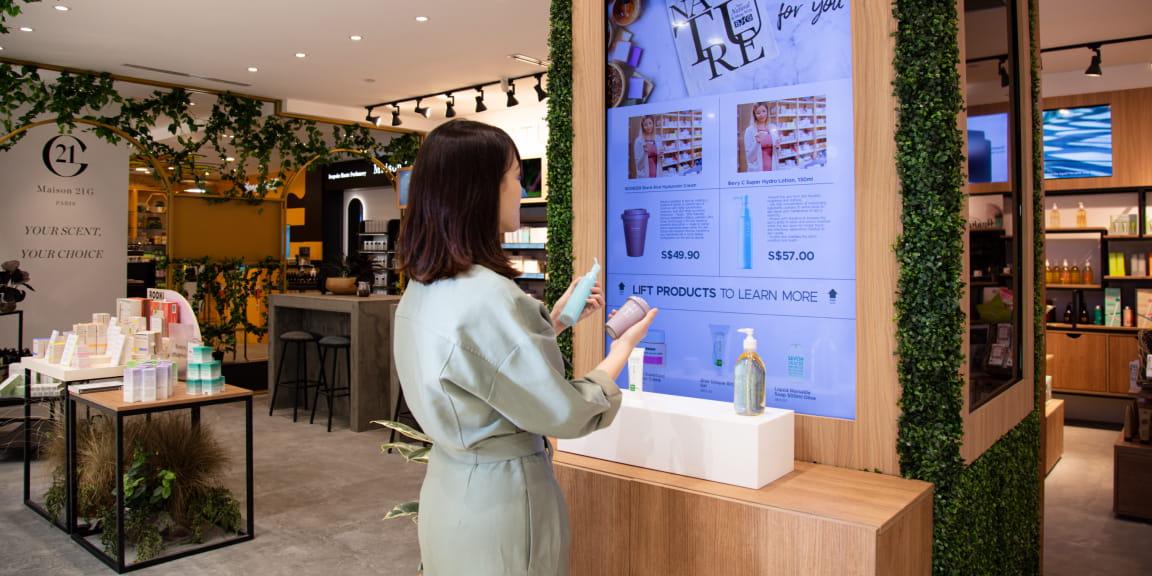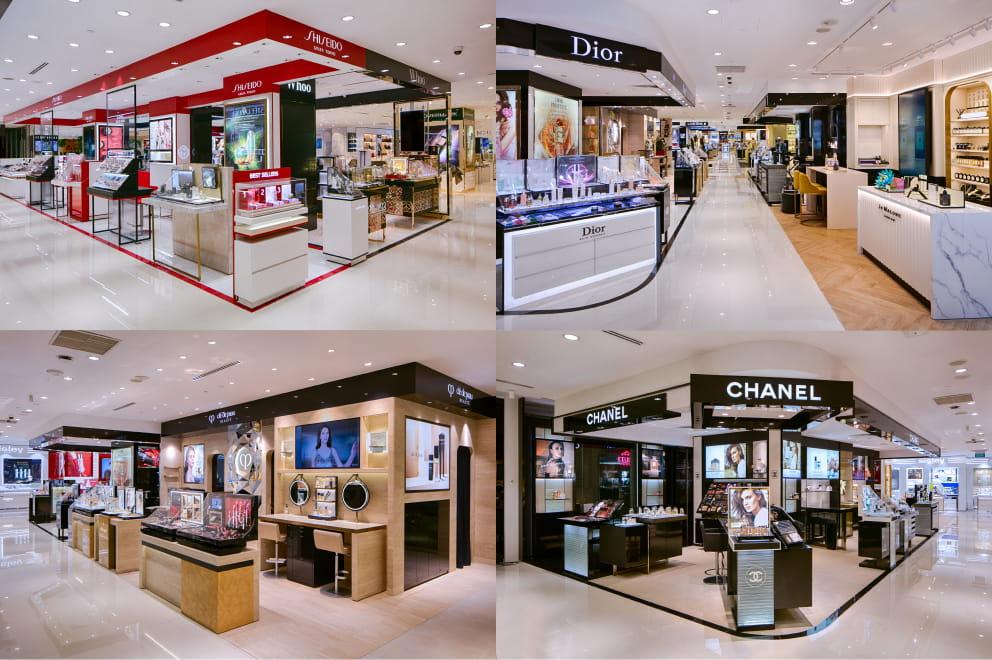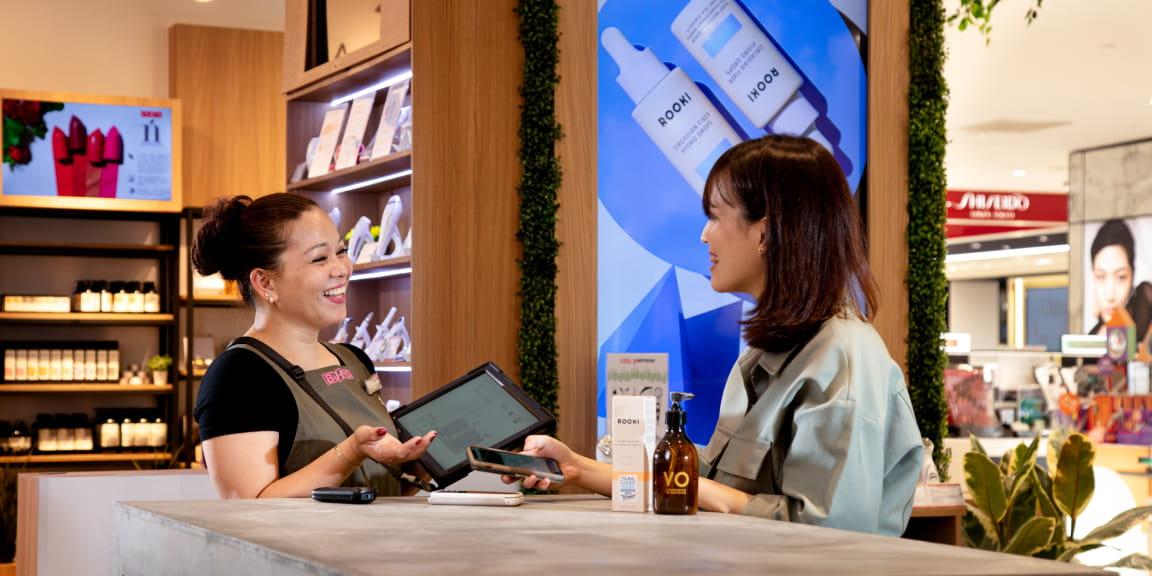Customer stories
Adyen & BHG: Delighting shoppers in a changing retail landscape
Warren Hayashi, Adyen’s APAC President, chats with Jheeva Subramanian, CFO of Singapore department store BHG, on the digital transformation that’s happening in the region – and how retailers can continue to delight shoppers.

This chat between Adyen and BHG was hosted by Danny Levy, and is available on hisDigital Transformation and Leadership podcast.
BHG is a department store in Singapore with five outlets. The brand embarked on a project at the start of 2020 to redefine the department store experience that typically has many friction points. It’s shedding its traditional image and has chosen Adyen as its payments partner to make shopping delightful for today’s shoppers.

Hear from Jheeva and Warren in the Digital Transformation & Leadership podcast or read on for the highlights
Accelerated digital transformation in Asia Pacific
Jheeva:Firstly, digital transformation is overdue. If you look at Europe, the US and to a certain extent China, this has been going on for the last five to six years, but strangely in Singapore and Southeast Asia, it hasn't caught on that much.
Covid-19 has amplified the need to do this sooner. Businesses are closing down and losing out because they've not done the digital transformation. It's now forcing their hands to do it quicker.
"Covid-19 has amplified the need for retailers to get on digital transformation sooner."
Blurring the lines between online and offline is key because the ways consumers shop have changed a lot. Customers are looking for more personalized ways to shop. Our strategy is to make the department store a place where people can go and spend time – for example, by learning something new about a beauty or fragrance product that you’re about to buy.
Warren:Retailers in the past focused on opening as many stores in as many locations as they could to get the foot traffic in. The shopping experience always centered around the brand and products. When it comes to payments, there was only one way to pay. You get in line. You wait. When it's your turn to pay, well, you either pay cash or card. It was a process dictated by the brand.
Now, it's no longer about shopping at a store that's closer to home or work. Consumers can shop online from any part of the world, and pay with so many different methods. One of the trends we’re seeing is going cashless with so many different types of wallets.
"Transformation, through digital tools and technology, has shifted the power balance from the retailer to the consumer."
The demand for contactless, QR codes, and the list of cashless payment methods are growing. Transformation, through digital tools and technology, has shifted the power balance from the retailer to the consumer.
In many ways, retailers had years of planning, but it’s been a case of trade-offs: If I invest in opening two more stores, does that mean that I have to defer the upgrade of the inventory management system? Five years of planning and trying to invest – all of these have to be re-examined, because brands really have to pivot.
Rapid growth of ecommerce, cashless payments and more
Warren:During these unprecedented times, we're distilling what we can do to get business going. One of our merchants isMichael Hill, a luxury jeweler present in Australia, New Zealand and Canada. As you know, buying jewelry is a high-touch experience: making sure that the diamond you're buying is a particular cut, color, etc. Typically, it's for a special occasion. But what do you do when you can’t go to the store?
We introduced Michael Hill to a payment method calledPay by Linkwhere they can send an SMS link with a hosted payments page to a shopper, then ship the items to the shopper.
"When innovation happens, even in such a short timeframe, consumers get habituated. The transformation continues, it doesn't take a step back."
We're seeing a high adoption rate for Pay by Link among retailers, especially luxury retailers. I think it's something that's going to continue. A recent research report shared that 70% of consumers in Singapore will continue to buy groceries and shop online even as stores reopen. When innovation happens, even in such a short timeframe, consumers get habituated. The transformation continues, it doesn't take a step back.
The biggest trend we see now is, of course, ecommerce. Every retailer that offers both in-store and ecommerce around the world has seen a significant jump online. The other trend we see, especially here in Southeast Asia and Asia in general, where historically in-store payments were heavy on cash, is the acceleration of the cashless agenda. Contactless payments are almost a given now in many parts of Asia Pacific. That's something that's moved really fast; it's not just contactless cards but also the number of wallets coming up.

A shopper checking out the latest products in BHG's revamped Beauty Hall
Jheeva:Many feel that going online and having an ecommerce channel is enough as a digital transformation. What also matters is having one backend system to connect your multi-channel business.
Take for example, the endless aisle concept, where you can easily access the full inventory across your organisation when you’re at any store. Shoppers will be able to do that at BHG because we will be migrating to a backend system that has a single view of our inventory.
The same data is accessible to front line staff for personalization. When a customer walks into the store, we’ll know if he or she is a repeat customer, or bought products at certain prices. We may have our CRM system, ecommerce, store, etc. Having a backend system that unifies all that is key.
Forget omnichannel, introducing… a unified commerce experience
Warren:The first thing we've done is to stop calling it omnichannel, we call it unified commerce. Many retailers thought of omnichannel as a way to cast a wider net. What makes more sense is really unifying commerce. Not around the store, or brand, but around the consumer. When you make that subtle mindset change, you start designing every experience and engagement differently.
Jheeva talked about the endless aisle. Locally, we work withLove, Bonito, a great womenswear brand, to support that. If you can’t find a particular item in-store, you can go to an iPad in-store, buy it online and have it shipped to your home.
Love, Bonito’s point-of-sale (POS) terminals are tied to the online systems through Adyen. When you pay at the cashier, your credit card is automatically recognized and the cashier knows if you’ve used the same card to shop online, so there’s an upsell opportunity.
The more engagement you have through the various channels with your consumers, the more data you have to create loyalty and “stickiness”. That's what we're driving towards with a lot of retailers: using payments to unify the disparate channels with the systems that retailers may have.
Unified commerce and the new role of the store
Warren:What the pandemic has shown is the strategic role of unified commerce and you can no longer rely on just in-store.
Consumers are becoming habituated to online shopping. Whether it’s buying groceries online or even doing online banking, the pandemic has short-circuited the adoption for many consumers.
But it’d be a myth to think that the store is being displaced. In a study we conducted last year: over 50 percent of millennials still feel that stores are essential to their shopping experience. But the role of the store has changed.
Take for example,BonobosandCasperin the US. Bonobos, is a menswear brand where they have stores with no inventory. It's a place where you get measured, and feel the material of the clothes you’re ordering. Casper is a mattress store where you can try if the firmness is right. But all purchases are made online and then shipped to the shoppers’ homes. The new store is like a showroom and the shopping, and payments experience, is largely online.
"It’d be a myth to think that the store is being displaced… the new store is like a showroom and the shopping, and payments experience, is largely online."

Shoppers can discover the latest offerings from their favorite brands at BHG stores
Jheeva:I agree with Warren. That's one reason why we have chosen to partner with Adyen, because they are aligned with what we want to do for unified commerce. When we were looking for a payment provider, many of them were still talking about omnichannel. Adyen is aligned to what we want to do – and that's why we went ahead with the partnership.
To me, omnichannel started from the concept of multi-channel, where a business had different areas for sales. First, you have a store, online, a pop-up event, and your social media. Then you progress to omnichannel, becoming a bit more consumer-centric, by connecting all the channels.
But one of the problems omnichannel has is that there are different systems. You need to do a lot of work to make one system talk to another. It created a lot more problems, it was expensive and things got left out. If the data center or the CRM module wasn't connected, you need a lot of work to connect it.
What it has evolved to is, as Warren said, a unified commerce approach where you have one system that has all of these capabilities and it makes data transfer very easy for the retailer. Essentially, the purpose of unified commerce, and digital transformation, is to make shopping easy and engaging for the consumer.
"The purpose of unified commerce, and digital transformation, is to make shopping easy and engaging for the consumer... that's one reason why we have chosen to partner with Adyen, because they are aligned with what we want to do for unified commerce."
That's why a unified commerce approach is extremely important right now to achieve the digital transformation needed. We used to spend a lot of money online, on digital advertising for our brand and stores, in the hopes of driving consumers to our shops. That has reversed a bit.
Physical stores are becoming very important to acquire customers because that's where they see the brand, and experience the brand. Then they go online and buy. Stores are becoming the media. Blending education, entertainment, and shopping, social and hospitality elements are vital in stores.
Making shopping and payment easy for the shoppers
Jheeva:It comes down to the basics of creating a seamless and frictionless journey for the consumer – letting them buy where they want, when they want, how they want it.

Adyen's mPOS solution lets BHG shoppers skip the queue and pay anywhere in-store
One step we have taken is to work together with Adyen to bring mobile POS (mPOS) to BHG. This is not a new technology, it's been around for ages, it’s just not used a lot here.
Traditionally, when you go to a department store in Singapore to buy something, the counter staff will write you a receipt, then you bring the receipt to the cashier or point-of-sale to make a payment. After that, you go back to the counter to collect your item. That seems crazy, with so many friction points and opportunities for drop-off.
"Adyen’s Pay by Link even lets BHG send a text message with a link and you can just click and pay – you don't need to be online to shop with us."
That's why it’s key to partner with Adyen on this so we can take payment no matter where a shopper is in-store. There’s no longer the hassle of going to make a payment at a cashier counter. As retailers, we need to put the shoppers first – thinking more of their needs rather than what is easy for the store to take a payment.
Adyen’s Pay by Link is great. We can even do phone orders now – if you’re not used to ecommerce, BHG can send a text with a link and you can just click and pay, so you don't need to be online to shop with us.
Warren:We may be in retail or payments, but ultimately, we’re all shoppers. We know what delightful experiences mean on a personal level. That's where it really starts.
I think retailers have a big challenge. Of course, the end goal is to make sure the shopper experience is seamless, frictionless. And frictionless isn't just about online checkouts. As Jheeva mentioned, it's also about the offline. When you make payment easy for the consumer, you make shopping more delightful too.
Hear the full story in theDigital Transformation & Leadership podcast by Danny Levy.
Want to learn how your retail business can benefit from unified commerce?Talk to us today.